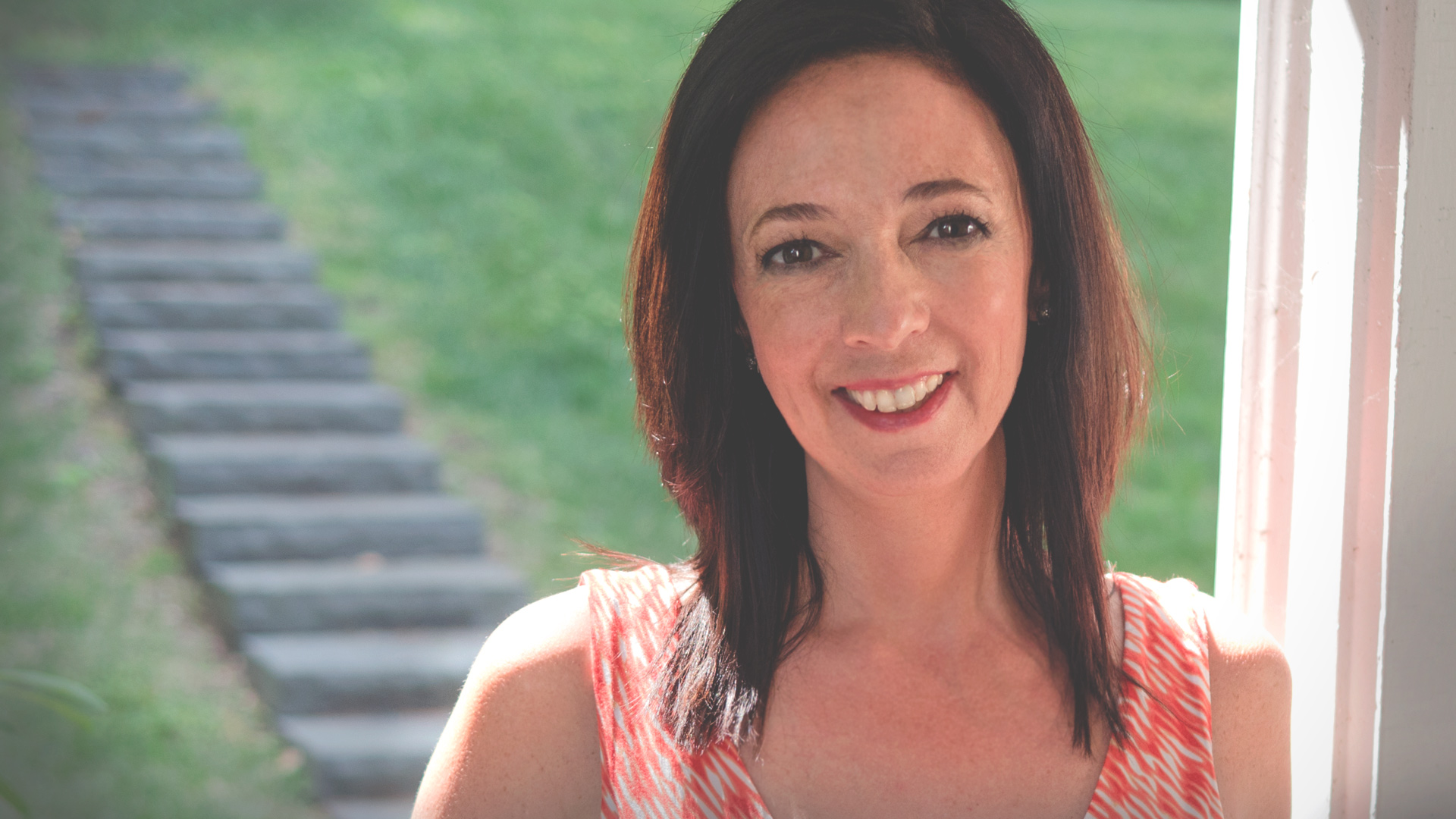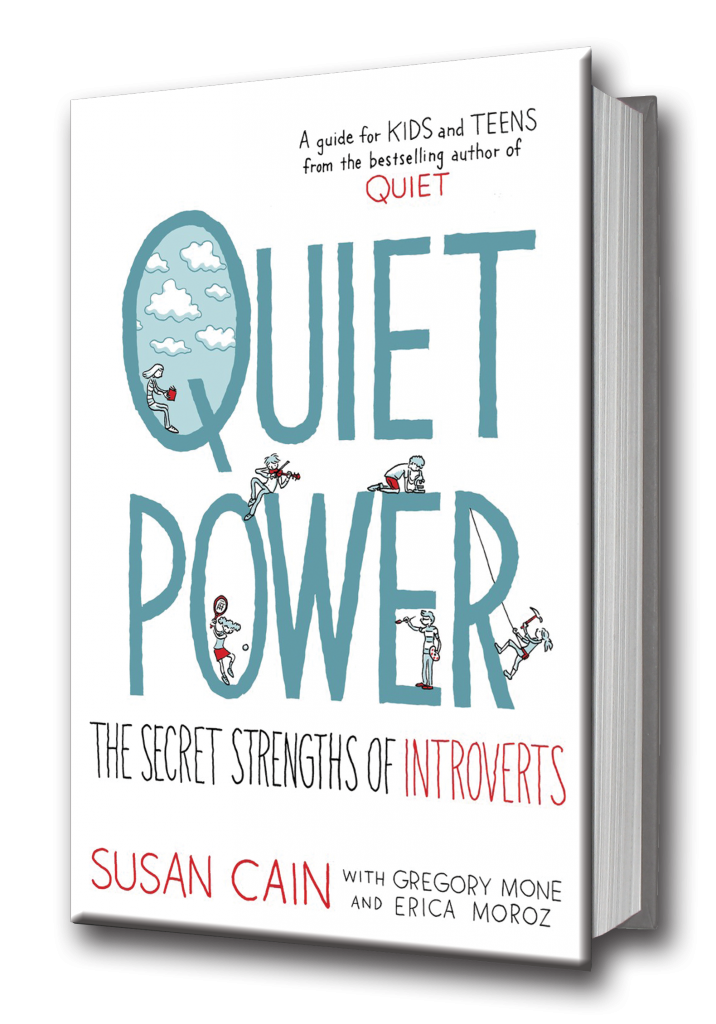
Susan Cain’s Quiet: Now an Illustrated Book for Introverted Kids
By Quiet Revolution
Susan Cain sparked a worldwide conversation with her highly-acclaimed TED talk and book Quiet: The Power of Introverts in a World That Can’t Stop Talking. She permanently changed the way we see introverts and the way introverts see themselves. But she noticed that a lot of fans mentioned childhoods of enforced extrovert ideal, and knew that a book needed to be written for kids and their parents and educators.
The day has finally come—Quiet Revolution is excited to share with readers that Susan’s book Quiet Power is about to hit the shelves!
Quiet Power is all about kids’ world—school, extracurriculars, family life, and friendship. It includes the stories of actual kids who have tackled the challenges of not being extroverted and who have made a mark in their own quiet way, and as well as more of Susan’s own story. Tips at the end of each chapter and a guide for parents and teachers provide resources for further learning and action. Read more below!

Quiet Power by Susan Cain: Excerpt
I’ve come to realize not only how important it is to follow my instincts and interests, but also to express my feelings and explain my actions to others. Here’s an example that might be familiar to you: Say you’re walking through the hallway, from one class to another, deep in thought or possibly overwhelmed by the noise and crowds. You pass a friend or classmate and glance at her briefly, but you’re so preoccupied that you don’t manage to stop to say hi and chitchat. You haven’t meant to be rude or hurtful, but your friend thinks you’re angry about something.
Be on the lookout for moments of misunderstanding such as this one, and do your best to explain what you were thinking and feeling. An extroverted friend—and maybe even an introverted one—likely won’t guess that you were distracted by your thoughts or by too much sensory stimulation, and your explanation will make all the difference.
Not everyone will understand your nature, though, even if you try to explain it. When Robby, a teenager from New Hampshire, first learned about introversion, he felt a great sense of relief. He had a tendency to turn quiet in large groups, and although he’d always felt comfortable talking and joking with his closest friends, he had a limit. “After a couple of hours I’m like, ‘Whoa, I can’t do this.’ It’s draining. There’s a wall that goes up and I don’t want to talk to anyone. It’s not physical exhaustion. It’s mental exhaustion.”
Robby tried to explain the differences between introverts and extroverts to an outgoing friend, but she couldn’t understand his perspective. She thrived in loud, busy places and didn’t see why he needed to be alone so often. Another friend of his, Drew, grasped the idea immediately. Drew was more of an ambivert. He wasn’t as outgoing as his younger sister, but he wasn’t as reserved as his parents, either. The more he talked with Robby about what it was like to be introverted, the more he wanted people to understand both sides of his own personality.
As an amateur filmmaker, Drew had been experimenting with a new animation style, and after researching the subject of introversion, he produced an animated, graphics-intensive public service announcement about what it means to be quiet. Drew posted it on YouTube, but that was only the start. He was also a producer of the high school’s television news show. Once a week, every student in the school watched the latest episode, and in one of these Drew included his PSA on introverts. The response was overwhelming; even one of the teachers, who was secretly introverted, expressed his gratitude. “I was able to bring the whole school community to an understanding,” Drew said. “For weeks afterward, people would come up to me and say, ‘Hey, that was awesome!’” His friend Robby thanked him more than anyone.
Every school could benefit from a deeper understanding of the different strengths and needs of introverted and extroverted students. The middle and high school years are the most difficult times to be introverted, because when hundreds of kids are crammed together in a single building it can feel as if the only way to gain respect and friendship is through vivacity and visibility. But there are so many other great qualities to have, such as the ability to focus deeply on topics and activities, and a talent for listening with empathy and patience. These are two of the “superpowers” of introverts. Channel them; find your passions and pursue them wholeheartedly. Then you will not only survive but also thrive.
STANDING OUT QUIETLY
Sometimes it’s natural for the stress and drama of the school day to get to you. But you can rise above all that with your inner self intact. Here are a few quick tips that you can always refer back to:
UNDERSTAND YOUR NEEDS: The boisterous environments common to schools are often taxing to introverts. Acknowledge that sometimes there will be a mismatch between you and your environment, but try not to let it stop you from being you. Find quiet times and places to recharge your batteries. And if you prefer to socialize with one or two friends at a time, rather than in a big group, that’s just fine! It can be a relief to find people who feel the same way, or who just understand where you’re coming from.
LOOK FOR YOUR OWN CIRCLE: You may find that your sweet spot is with athletes, coders, or with people who are just plain nice whether or not your interests are perfectly aligned. If you need to make a checklist of things to talk about in order to get a friendship rolling, go for it.
COMMUNICATE: Make sure your closest friends understand why you retreat or become quiet at times during school; talk to them about introversion and extroversion. If they’re extroverts, ask them what they need from you.
FIND YOUR PASSION: This is crucial to everyone, regardless of personality type, but it’s especially important for introverts, because many of us like to focus our energy on one or two projects we really care about. Also, when you’re feeling scared, genuine passion will lift you up and give you the excitement you need to propel you through your fear.
EXPAND YOUR COMFORT ZONE: We can all stretch to some degree, pushing past our apparent limitations in the service of a cause or a passion project. And if you’re stretching into an area that really frightens you—for many people, public speaking falls into this category—make sure to practice in small, manageable steps. You’ll read more about this in chapter 13.
KNOW YOUR BODY LANGUAGE: Smiling will not only make other people comfortable around you—it will also make you happier and more confident. This is a biological phenomenon: Smiling sends a signal to the rest of your body that all is well. But this principle is not just about smiles: Pay attention to what your body does when you’re feeling confident and at ease—and what it does when you feel tense. Crossing your arms, for example, is often a reaction to nervousness, and it can make you seem—and feel—closed off. Practice arranging your body in the positions that don’t signal distress—and that make it feel good.
Want to know more? You can see Susan’s own words about Quiet Power during her appearance on New York One.
Excerpt from Quiet Power by Susan Cain. Copyright ©2016 by Susan Cain. Published by Dial Books for Young Readers, a division of Penguin Random House. Audiobook also available.









